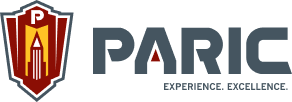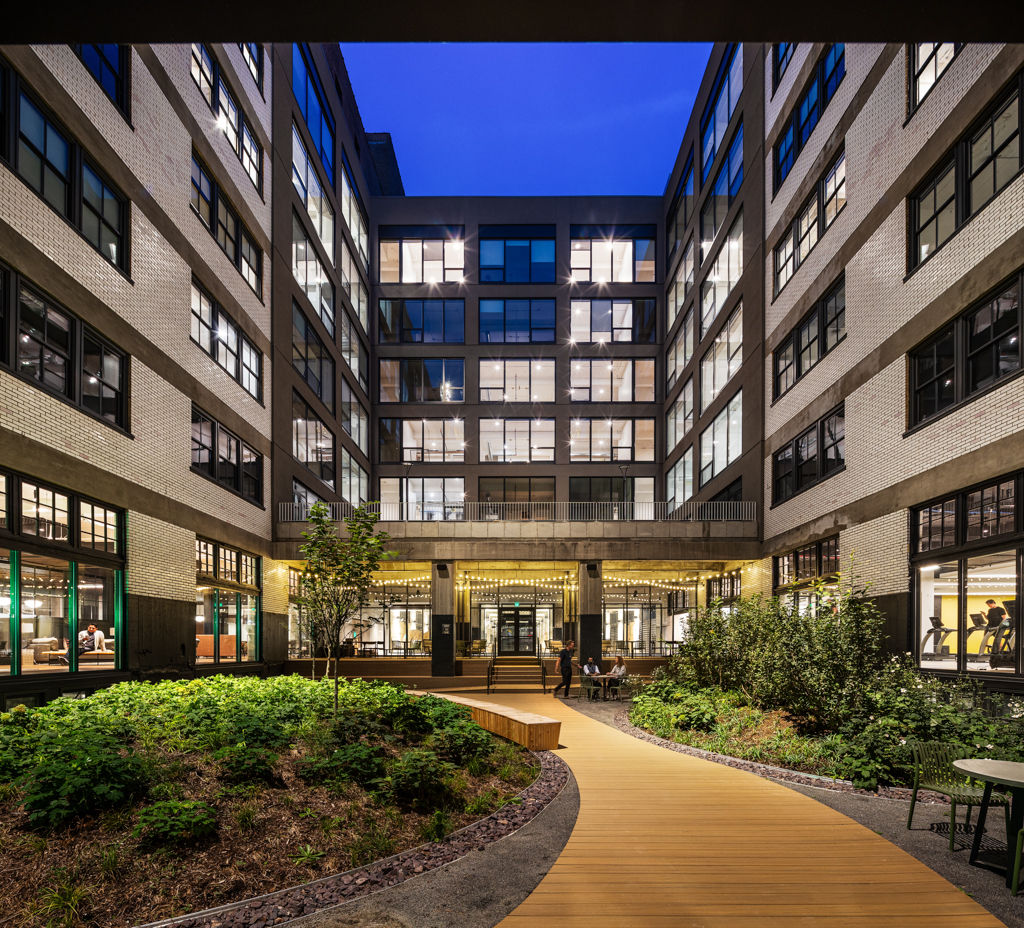INTRODUCTION
PARIC was awarded a 150,000 square foot, greenfield replacement medical facility project in December of 2020, at a time when the COVID-19 pandemic’s effects on material procurement were taking hold. As the team shaped its plan, one of its most critical objectives was to determine which materials would have the greatest impact on schedule and budget.
Because PARIC’s team of project management professionals stay abreast of market conditions, it was clear that the metal deck, structural steel and elevators would be the biggest risks. However, it was soon clear items such as PVC, major mechanical/electrical equipment and roofing were also at risk. The efforts outlined below took commitment from all parties and stakeholders as the project budget was not yet finalized and material purchased in advance faced the uncertainty of not being used at all.
METAL DECK
Early in 2021, the lead time for metal deck was six months. Because 100% Construction Documents would not be issued until May, it was not possible – without significant delay – to wait until design was complete to order the metal decking. Working with the structural engineer, the team was able to gather sufficient critical information (deck gauge, profile, estimated square footage) prior to a completed structural design. Aptós, PARIC’s procurement division, was able to obtain bids from several fabricators, lock in competitive pricing, and be queued for fabrication. The signed LOI from the Owner was received on March 1, 2021, and metal decking delivered to the site exactly six months later on September 1, 2021, keeping the construction schedule intact.
STRUCTURAL STEEL
As with metal deck, structural steel had significant lead times and extremely volatile pricing fluctuations at the beginning of 2021. Due to its diligent team of procurement experts, PARIC was aware of steel price escalation in the months prior to award of the project. Industry intel revealed that several other increases were expected in late first quarter/early second quarter 2021.
The final structural steel connections and detailing information would not be available until May 5, yet the fabricator required commitment by April 15, to reserve time in the shop schedule. Additionally, market prices were predicted to surge again in late April.
Along with Aptós, PARIC was able to negotiate a price-per-ton with the fabricator based on tonnage of the beams/columns as shown on the mill order set of documents. The remainder of the miscellaneous steel would not be ordered until after the 100% Construction Documents were issued.
Although the signed LOI was not received until April 19, 2021, PARIC released the fabricator in time to lock in the negotiated pricing and guarantee a fabrication slot that got the main members of the structural steel for the project on site by August 23, 2021, per the construction schedule.
ELEVATORS
PARIC recommended early engagement with the elevator subcontractor to avoid potential steel and/or foundation coordination issues. Using the design development documents, our team negotiated with the awarded elevator contractor to begin shop drawings early. Doing so enabled the team to mitigate any coordination issues in the design phase, reducing the risk of future change orders, and reducing the Owner’s financial commitment at this stage of the project.
PVC / MECHANICAL / ELECTRICAL
As the project progressed and the design-assist MEP contractors were engaged PARIC determined that PVC plumbing, piping and electrical conduit materials were fluctuating in price and lead times would not meet the underground rough-in schedule.
The team expedited on-boarding of the mechanical contractor allowing them to procure plumbing piping per the schedule. The electrical contractor, however, was not able to source material that would meet the schedule without exceeding the budget.
PARIC directed Aptós to execute a search of its nationwide network to locate the PVC conduit. Aptós identified a vendor that could meet both availability and budget requirements and secured the order. PARIC was then able to assign this order to the electrical contractor, maintain the budget, and proceed with the installation on time.
As part of the procurement process for the major mechanical and electrical equipment, the team worked with the designers to fine tune requirements based on the Owner’s end-use needs. Given the long lead times, it was vital for the team to prioritize finalizing these details. The team worked directly with the equipment manufacturers and delivered various solutions for the Owner and engineer to review. Ordering directly through Aptós allowed time for design to be finalized, reduced cost and delivered equipment to site without compromising the schedule.
ROOFING
As market conditions continued to fluctuate during the course of the project, the team discovered that tapered insulation, a portion of the roofing materials, would have up to a six-month procurement lead time. Also, due to the manufacturer’s inability to guarantee pricing until shipment, bidding subcontractors wouldn’t confirm roofing would stay within budget.
Aptós again performed a nationwide sourcing exercise and located the specified material but availability was still an obstacle. Unwilling to let the schedule get drastically delayed, PARIC recommended to the Owner the purchase and installation of available temporary roofing material. The temporary membrane has a six-month life span which gives the team enough time to get the permanent material on site and installed.
SUMMARY
The procurement process for the replacement medical facility project presented challenges – and opportunity for creative solutions – at every turn.
Early planning, solid subcontractor relationships and the Aptós’ procurement network safeguarded the project from significant schedule delays and budget increases. The project began when expected, steel arrived on time, and things continue to move smoothly on site.
The process for procuring construction materials has drastically shifted in the last two years. Construction managers that lack agility and foresight are set up for failure.
A strong, knowledgeable preconstruction team and creative purchasing solutions, along with a nimble design team and motivated Owner, are all vital to what PARIC believes to be essential for any project to be successful.




